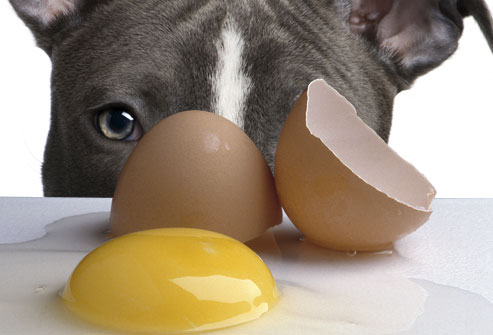My latest for the Texas A&M Center for Food Safety.
The Kentucky Derby Is Decadent and Depraved introduced the world to Gonzo journalism and Hunter S. Thompson in 1970.
 Forty-four years later, they’re still living the decadence at Australia’s Melbourne Cup.
Forty-four years later, they’re still living the decadence at Australia’s Melbourne Cup.
In true Hunter fashion, Australian bars open at 7 a.m. on Tuesday, Nov.4, Melbourne Cup day. The entire country shuts down to watch a three-minute horse race. Women wear outrageous hats.
And people get sick.
Last year on silly-hat day, there was an outbreak of Salmonella poisoning at Melbourne Cup functions.
At least 220 people at 40 different Melbourne Cup events catered by the same Brisbane-based company, Piccalilli Catering, got sick with Salmonella. One died.
On Nov. 14, the co-owner of Piccalilli Catering released a statement via Twitter identifying her company as the responsible caterer and saying that they were deeply upset and distressed but denying responsibility, alleging that the infection was due to eggs provided by their supplier to make raw egg mayonnaise. Ms Grace denied any breakdown in her company’s quality system.
In the ensuing year, there has been no further update from Queensland Health and the initial Nov. 13 update has been erased from the Department’s website.
There’s some basic risk analysis questions here that should be answered to provide some level of confidence to Australian consumers, so I wrote the Queensland Minister of Health to ask:
 • how did the outbreak happen;
• how did the outbreak happen;
• was this commodity sourced from a food safety accredited supplier;
• did handling by the caterer contribute to this outbreak;
• what is Queensland Health’s policy on use of raw eggs in dishes to be consumed raw;
• is this policy enforced;
• is the investigation closed and if so, why and when was it closed;
• will an outbreak investigation report be created and publicized;
• why was the previous update erased from the Department’s website and on whose authority; and,
• what is Queensland Health’s policy on providing information to the public.
It is in the best interests of both the public and the food industry that your Department respond promptly to such outbreaks demonstrating timeliness, transparency and critical detail. I have no confidence that your Department will follow through on the release of information should there be any similar outbreaks.”
In the past year, I’ve chatted with folks about the Melbourne Cup outbreak and am usually met with, oh yeah, I heard something about that. One person told me her husband was hospitalized for several days and was pissed off about the lack of public discussion.
Forget the Salmonella, it’s all about hats.
And cute tweets.
Safe Food Queensland on Oct. 16, 2014 wrote that “eggs that are cracked &/or dirty (e.g. feathers, feces) can be a source of microbes like salmonella, which if eaten can make people sick.”
So how did those 220 people get sick last year?
Or the 160 who got sick from a raw-egg mayonnaise at a Canberra restaurant on Mother’s Day 2014 when they just wanted to go for lunch?
Or the weekly outbreaks involving raw eggs around the world.
As reported by the Des Moines Register, in 2010, a Salmonella outbreak traced to Austin “Jack” DeCoster’s Iowa egg plants caused the recall of 550 million eggs and led to confirmed illness in nearly 2,000 people, though the U.S. Food and Drug Administration estimated that tens of thousands of people were sickened.
Plea agreements show the company sold the tainted eggs for about eight months starting in January 2010. Documents in a lawsuit by a California food coop that sold the eggs indicate that four months elapsed between when a manager was notified by a veterinarian that Salmonella was present in three DeCoster plants and when one of those, Wright County Eggs, began a recall. And that was only after it had been contacted by the FDA about salmonella sickness in three states linked to its eggs.
Given the BS brand names, how is a consumer to know?
The vast majority of farmers can produce eggs with limited or no Salmonella. I want to buy those eggs – not the eggs marketed as cage-free or not (I don’t want chickens eating their own shit).
It can be a scary and deranged world out there. Might as well bet on the ponies.
A table of raw egg related outbreaks in Australia is available at https://barfblog.com/wp-content/uploads/2014/03/raw-egg-related-outbreaks-australia-3-3-14.xlsx
Dr. Douglas Powell is a former professor of food safety who shops, cooks and ferments from his home in Brisbane, Australia.
DISCLAIMER: The views and opinions expressed in this blog are those of the original creator and do not necessarily represent that of the Texas A&M Center for Food Safety or Texas A&M University.





 The owners were hosting the Girl Scouts of America, who needed to earn their baking badges. This was especially significant because the bakers had failed to earn their baking badges back in the day.
The owners were hosting the Girl Scouts of America, who needed to earn their baking badges. This was especially significant because the bakers had failed to earn their baking badges back in the day.

 their Saturday morning lattes and eggs Benedict, but offers nothing for the over-easy crowd.
their Saturday morning lattes and eggs Benedict, but offers nothing for the over-easy crowd..jpg) requirements created headaches for producers selling nationwide.
requirements created headaches for producers selling nationwide. Internet or even personal phones to see how the eggs were raised and testing data. The best producers and processors will go far beyond the lowest common denominator of government and should be rewarded in the marketplace.
Internet or even personal phones to see how the eggs were raised and testing data. The best producers and processors will go far beyond the lowest common denominator of government and should be rewarded in the marketplace.
.jpg) this summer’s massive egg recall, the go-ahead to sell shell eggs again. But the other, Wright County Egg, instead got a scathing warning letter threatening that if corrective action is not taken, the FDA could seize company assets.
this summer’s massive egg recall, the go-ahead to sell shell eggs again. But the other, Wright County Egg, instead got a scathing warning letter threatening that if corrective action is not taken, the FDA could seize company assets. their heads. How had inspectors for Costco, who looked over the northeast Iowa farm where the chain bought eggs, not noticed the rodent holes in the henhouses?
their heads. How had inspectors for Costco, who looked over the northeast Iowa farm where the chain bought eggs, not noticed the rodent holes in the henhouses?.jpg) salmonella-prevention programs, a job the USDA leaves to the Food and Drug Administration.
salmonella-prevention programs, a job the USDA leaves to the Food and Drug Administration.
.jpg) only as good as their enforcement, adding, "It goes back to the responsibility of whoever is producing the food. How do you establish a corporate culture where people pay attention to food safety?"
only as good as their enforcement, adding, "It goes back to the responsibility of whoever is producing the food. How do you establish a corporate culture where people pay attention to food safety?".jpg) building’s loading dock and trash receptacle, he said.
building’s loading dock and trash receptacle, he said.